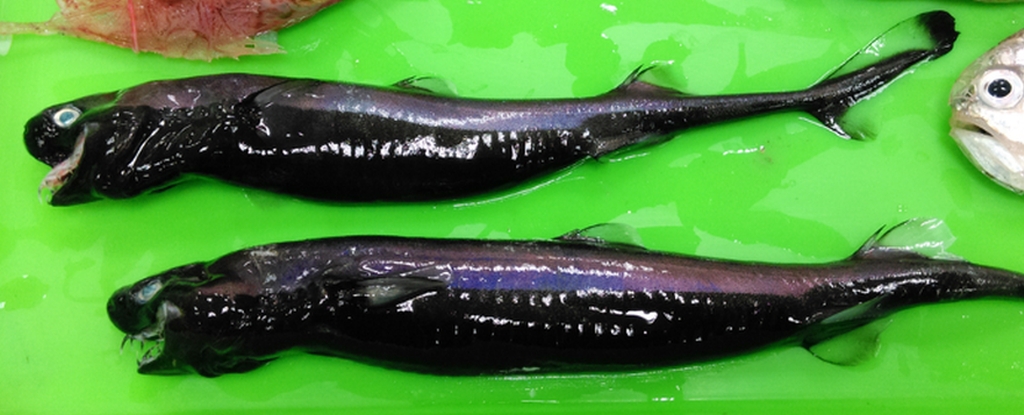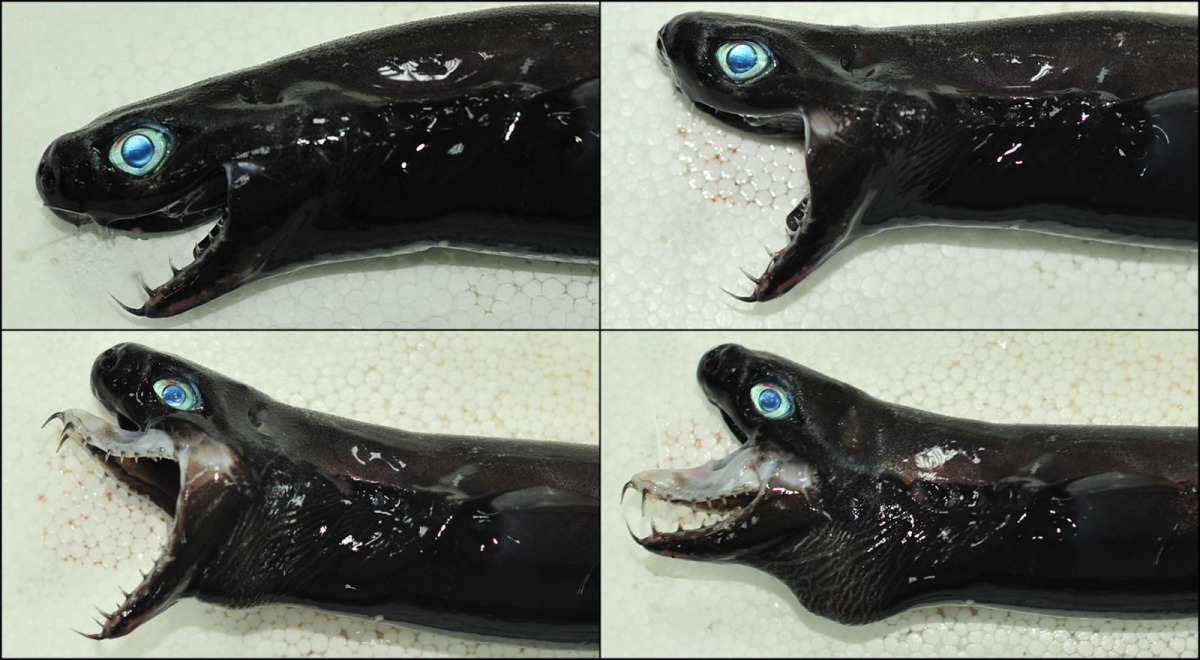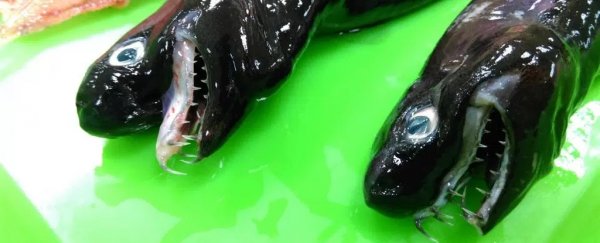A recent catch in Taiwan is making waves: five rare and rarely seen viper dogfish - a type of small, luminescent and inky black shark that lives in the Pacific Ocean off the coasts of Hawaii, Japan and Taiwan.
The catch was made by the Taiwanese Fisheries Research Institute during a survey of fish species living off the coast of Taitung, according to local news reports.
The viper dogfish, Trigonognathus kabeyai, are peculiar and distinctive-looking beasties, but not likely to harm humans. They live in deep waters, seem to have a small population and range, and are so elusive that they weren't even discovered until 1986.
Since then, they've shown up a few times over the decades, usually as fishing bycatch. Because they're so rarely seen, we don't know a lot about them, but scientists have been able to glean a fair amount from their taxonomy.
Fisheries officials off the coast of Taiwan have hauled up a gaggle of rare viper dogfish! https://t.co/tOWTB9NZBM Image: Fisheries Research Institute pic.twitter.com/ZabrV161ub
— Earth Touch (@EarthTouch) January 10, 2018
As far as sharks go, they're definitely on the smaller side, coming in at a maximum of around 54 centimetres (21 inches). They appear completely black, but have light-producing cells called photophores on their underside.
More than 75 percent of all sea animals glow in some way, so obviously it's evolutionarily beneficial - but there can be different reasons why.
 (Fisheries Research Institute)
(Fisheries Research Institute)
For the viper dogfish, there is little light penetrating as deep as the shark likes to swim, around 270 to 360 metres (890 to 1,180 feet), and it could be using its photophores for attracting mates or prey.
On the other hand, other fish with ventral photophores use them as camouflage to protect against predators from below. When they light up their undersides, they're harder to see against the light from the sky far above.
Most catches have occurred at night, which suggests that the sharks swim into shallower waters after sunset to feed, so it may venture deeper still.
 Samples from a previous catch in 2016 in Japan (Fisheries Research Institute)
Samples from a previous catch in 2016 in Japan (Fisheries Research Institute)
The shark has needle-like teeth and narrow, triangular, extendable jaws that allow it to reach out and snatch prey.
It feeds on bony fish and crustaceans, based on partially digested remains found their stomachs, probably swallowing its catches whole.
All but one of the recent catch were dead when pulled from the ocean, according to local reports. Researchers tried to keep the last one alive, but it died after just one day.
